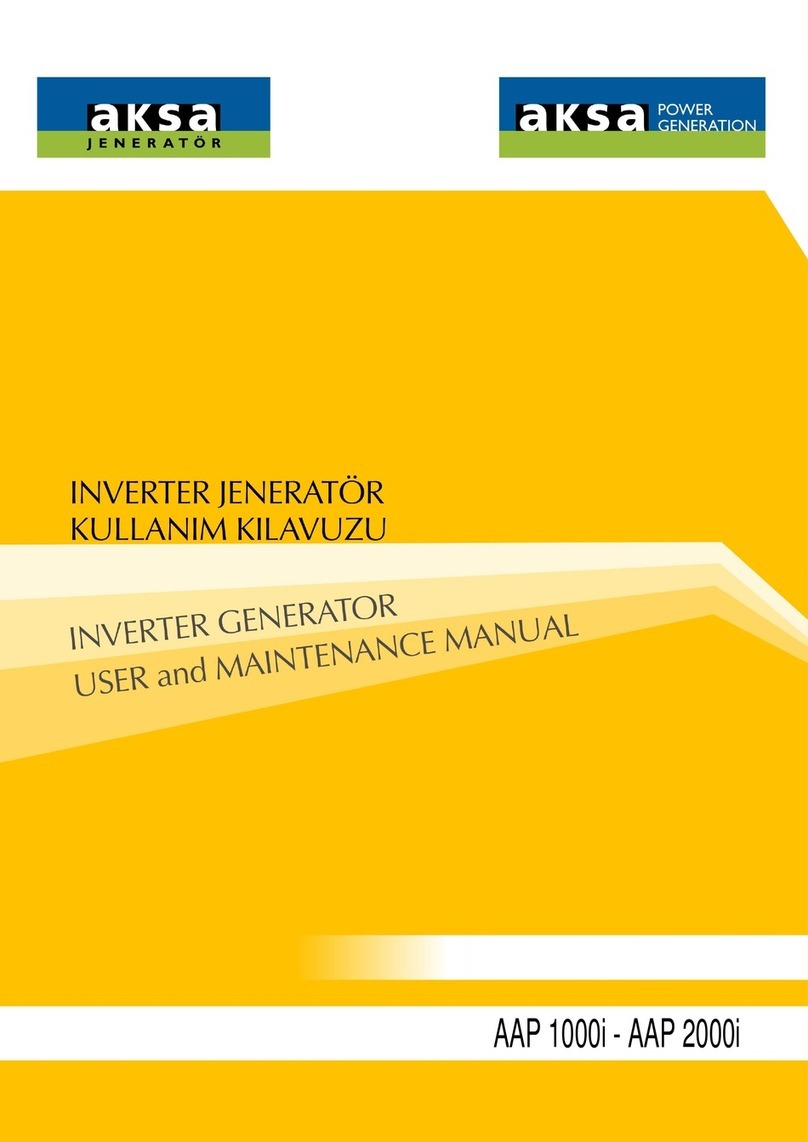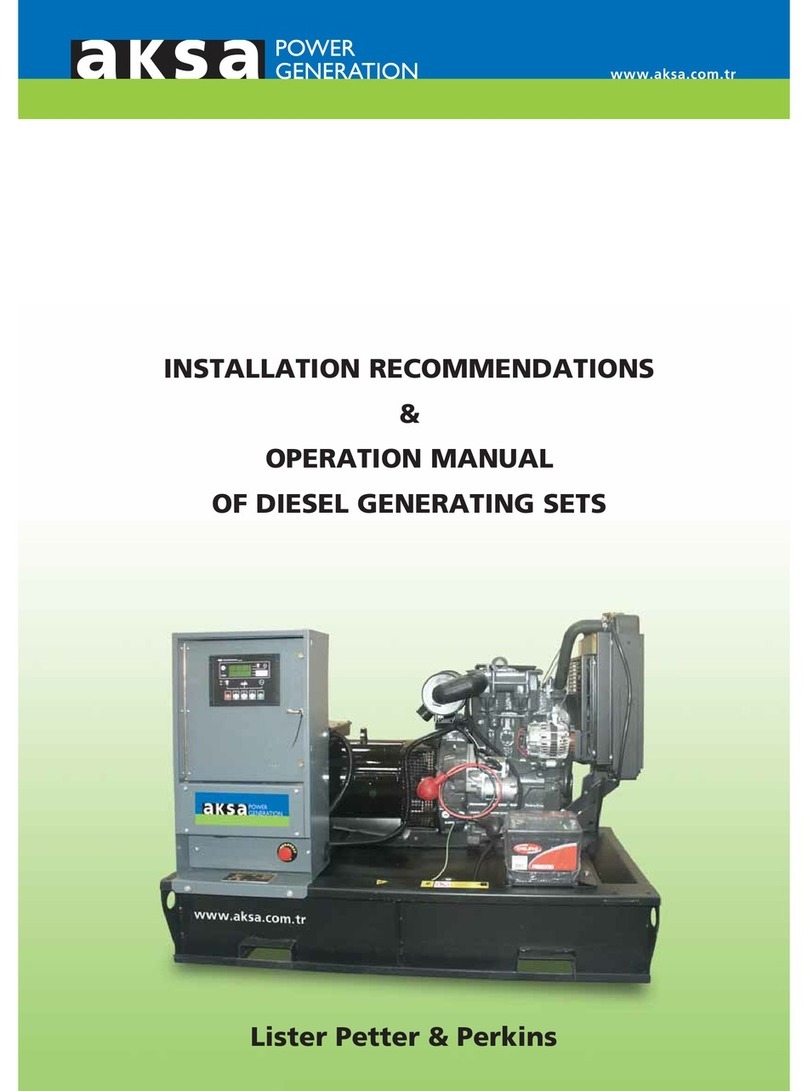Engine exhaust emissions are hazardous to
personnel. The engine exhaust for all indoor
generating sets must be piped outdoors via leak-
free piping in compliance with relevant Codes,
Standards and other requirements. Ensure that
hot exhaust silencers and piping are clear of
combustible material and are guarded for
personnel protection per safety requirements.
Ensure that fumes from the exhaust
outlet will not be a hazard.
ever lift the generating set by
attaching to the engine or alternator
lifting lugs, instead use the lifting
points on the baseframe or canopy.
Ensure that the lifting rigging and
supporting structure is in good condition and
has a capacity suitable for the load.
Keep all personnel away from the generating set
when it is suspended.
2
2. SAFETY
2.1 GENERAL
The generating set is designed to be safe when
used in the correct manner. However
responsibility for safety rests with the personnel
who install, use and maintain the set. If the
following safety precautions are followed, the
possibility of accidents will be minimized. Before
performing any procedure or operating
technique, it is up to the user to ensure that it
is safe. The generating set should only be
operated by personnel who are authorized and
trained.
!
!
!
WARNING
Read and understand all safety precautions and
warnings before operating or performing
maintenance on the generating set.
Failure to follow the instructions, procedures, and
safety precautions in this manual may increase the
possibity of accidents and injuries.
Do not attempt to operate the generating set with
a known unsafe condition.
If the generating set is unsafe, put danger notices
and disconnect the battery negative (-) lead so that
it cannot be started until the condition is corrected.
Disconnect the battery negative (-) lead prior to
attempting any repairs or cleaning inside the
enclosure.
Install and operate this generating set only in full
compliance with relevant ational, Local, or Federal
Codes, Standards or other requirements.
!
!
!
Fuel and fumes associated with generating sets
can be flammable and potentially explosive.
Proper care in handling these materials can
dramatically limit the risk of fire or explosion.
However, safety dictates that fully charged BC
and ABC fire extinguishers are kept on hand.
Personnel must know how to operate them.
2.3 FIRE AND EXPLOSION
!
!
Chapter 4 of this manuel covers procedures for
installation, handling, and towing of generating
sets. That chapter should be read before installing,
moving and lifting the generating set or towing
a mobile set. The following safety precautions
should be noted:
2.2 INSTALLATION,
HANDLING AND TOWING
WARNING
Make electrical connections in compliance with
relevant Electrical Codes, Standards or other
requirements. This includes requirements for
grounding and ground/earth faults.
For stationary generating sets with remote fuel
storage systems, make sure such systems are
installed in compliance with relevant Codes,
Standards or other requirements.
!
!
!
!
!
!
!
!
WARNING
Ensure that the generating set room is properly
ventilated.
Keep the room, the floor and the generating set
clean. When spills of fuel, oil, battery electrolyte
or coolant occur, they should be cleaned up
immediately.
ever store flammable liquids near the engine.
Do not smoke or allow sparks, flames or other
sources of ignition around fuel
or batteries. Fuel vapours are
explosive. Hydrogen gas
generated by charging batteries
is also explosive.
!





























